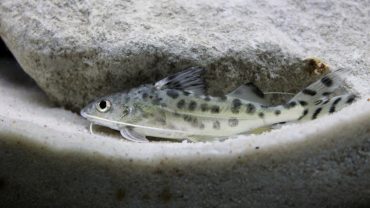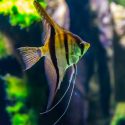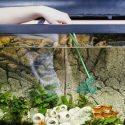Can Aquarium Plants Grow With Led Lights?
So you’ve decided to literally sleep with the fishes by getting yourself an aquarium huh? Whether it’s a small home fish tank or a massive community aquarium, I’m sure it’s going to be beautiful. But to keep it that way, you have to make sure that the fish are happy in a near-natural environment.
One way to achieve this is by using live plants to simulate the great outdoors, provide a food source for some fish, and even improve the oxygen levels in the water.
Since most aquariums tend to be indoors, you’ll need to provide LED lighting among other requirements to keep your plants healthy. And that’s why we’re here today my fellow fish keeping enthusiasts; to find out if indeed aquarium plants can grow with good LED lights and how to properly use it to benefit all life in the aquarium.
Can aquarium plants grow with LED lights?
Before we even get to LEDs, let’s look at the bigger picture. We all know that light is essential for the health and growth of all plants, especially aquarium plants. Proper lighting allows these plants to absorb the carbon dioxide breathed out by fish and keep the environment cleaner. However, too much light and algae will grow; too little and the plants suffer.
So, what lighting options are there?
- Incandescent lighting – If you are considering using old fashioned incandescent light bulbs, let me stop you right there. Incandescent bulbs are obsolete for several reasons. For starters, they can barely penetrate the water effectively below 12 inches. Secondly, incandescent bulbs cause excessive heat that warms up the water unnecessarily. And lastly, they have very short life spans and can become expensive to operate compared to others.
- Fluorescent lighting – While this type of lighting is commonly used, it is not an effective way of sustaining plant life. That’s because in addition to having low penetration power, you’ll need plenty of powerful fluorescents to achieve any results.
- LED lighting – When it comes to aquatic plants and others, LED lighting is king. In addition to showing amazing progress in aquarium plant growth, LEDs have one of the strongest penetration power of up to 24 inches deep without any particular attention. What’s more, the cost of operating LED lighting is only a fraction what it would cost to operate fluorescents and incandescents.
So, can aquarium plants grow under LED lighting? With these facts, it’s clear to see that not only are LED lights capable of supporting aquatic plant life, they actually come highly recommended for the job!
Some of today’s LEDs actually come in water-proof tubes that allow them to be used in and under water for a marvellous glowing effect. However, it wouldn’t be responsible of me if I didn’t give you some rules and guidelines on how to use your LEDs.
Do’s and Don’ts for aquarium LED lights
i) DO use a timer
Now, can you leave the LED lights in your aquarium on 24 hours a day every day? Sure. But is it advisable or even humane? Definitely not for the fish. That’s why it’s advisable to simulate nature and have at least 8 to 12 hours of light a day. Whether its animals or plants, consistency is always recommended for optimal growth.
ii) DO ventilate the LEDs
While LED lights don’t typically transfer heat into the aquarium, they tend to generate a small amount of heat. Over time, the heat can dramatically degrade the lifespan of the chip in the LEDs. This is why you need to keep the lights cool by providing adequate air circulation to dissipate the heat.
iii) DON’T wet the LEDs
Most LEDs are not meant to be submerged in water, especially if they’re not waterproof. Exposing regular old LED lights to water for a length of time can damage the bulb’s circuit board and likely corrode the hardware. Similarly, mineral deposits can adversely damage the heat sinks and other LED components. So make sure you keep your lights dry, safe and clear.
Parting shot
There you have it my fellow marine lovers. I guess that answers the question of whether aquarium plants can grow under LED lights. Today, LEDs are available in a wide range of colours, spectrum and combinations. So make sure you play around with them and explore all sorts of visual combos to create unique and eye-catching aesthetics.






Your article is helpful. I have one question, however. Can one use any LED light for aquarium plant life or is there a specific LED light that one must buy. One concern is that the white LED it is a harsher light and some fish might be shocked by it. I had my first Rice fish die when I set the LED light right over the small aquarium. I learned later they don’t like it so direct. However, the plants need a light if not getting natural light. Any suggestions? Thanks,